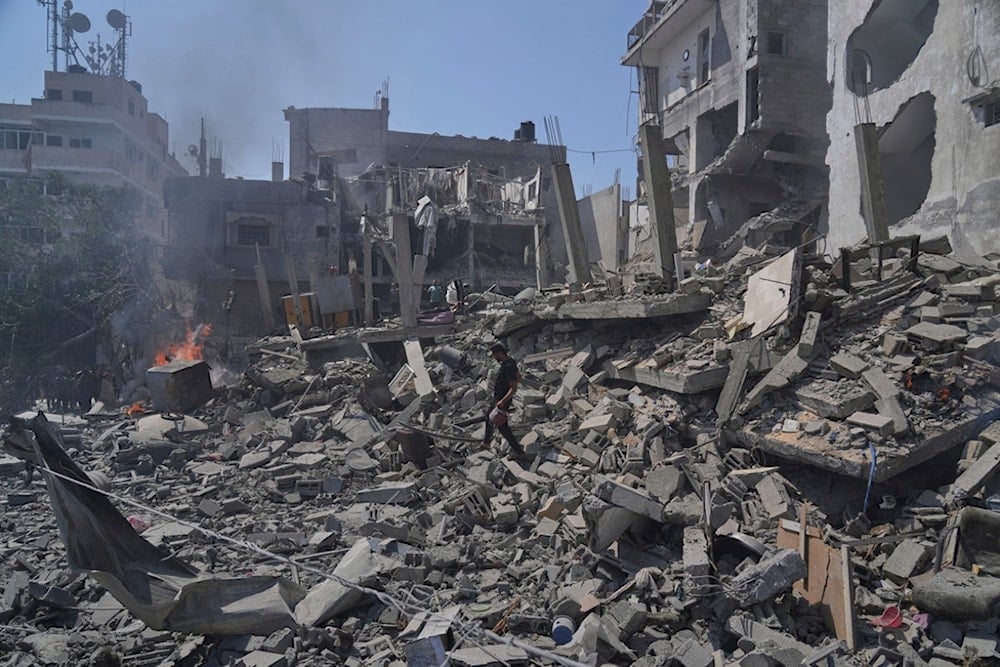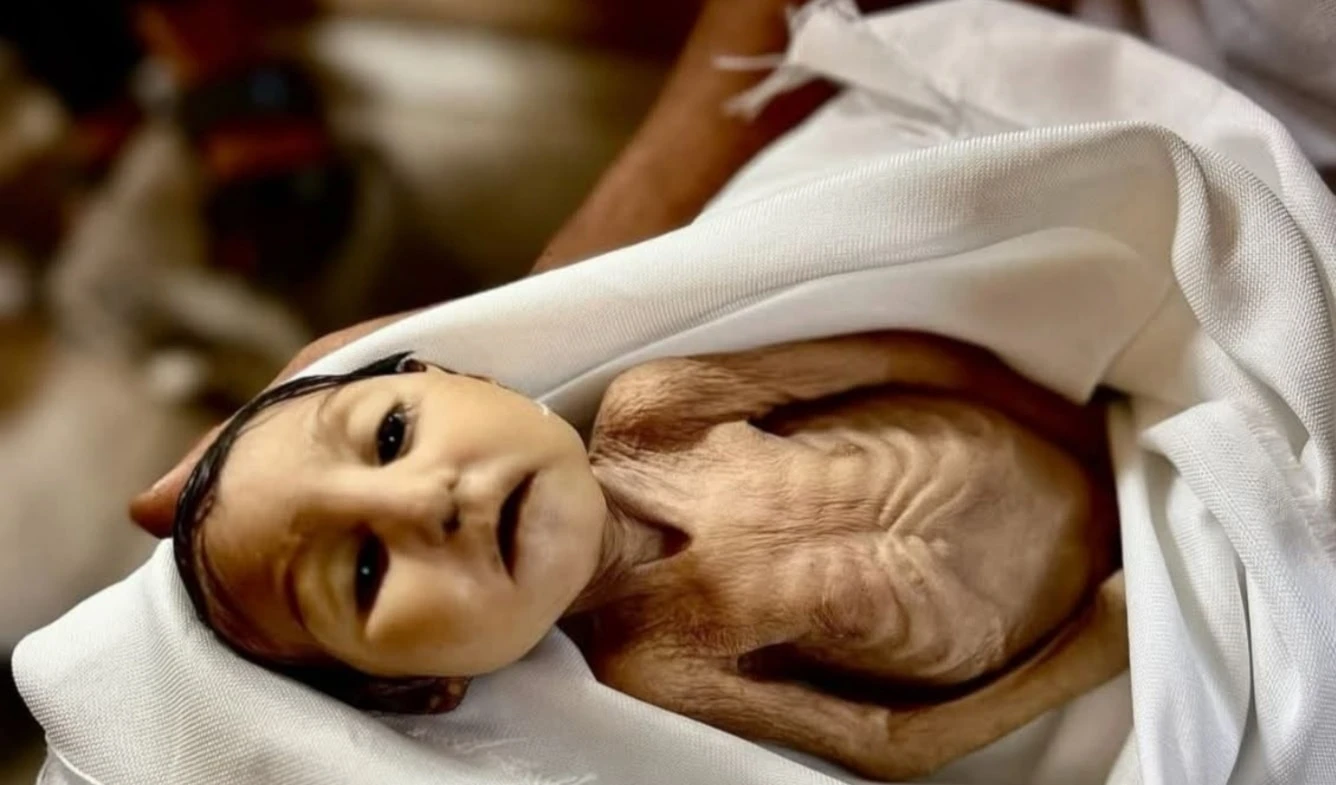Fresh round of Israeli violence kills 34 at US-backed Gaza 'aid' site
Aid sites in Gaza have become death zones, with over 50 Palestinians killed near US-backed food distribution points, sparking UN condemnation and global outrage.
-

A Palestinian man walks across the rubble of a building destroyed by an Israeli strike in Deir al-Balah, central Gaza Strip, Monday, June 16, 2025. (AP Photo/Abdel Kareem Hana)
At least 50 Palestinians were killed on Monday, including 23 gunned down near a US-sponsored aid distribution site in Rafah, according to Gaza's Ministry of Health. More than 200 others were wounded in the same massacre, one of several deadly attacks in recent days that have targeted starving civilians in search of humanitarian aid.
The shootings occurred near a facility operated by the Gaza Humanitarian Foundation (GHF), a controversial aid mechanism established under US sponsorship and directly coordinated with Israeli occupation forces. The GHF has become a centerpiece of a new, militarized aid model imposed after "Israel" partially eased its three-month siege. However, this model has increasingly been linked to mass killings, sparking outrage from humanitarian organizations and Palestinians alike.
The United Nations has sharply condemned the GHF system. "Scores of people have been killed & injured in the past days, including of starving people trying to get some food from a lethal distribution system," said Philippe Lazzarini, head of UNRWA, the UN agency for Palestinian refugees.
Death traps
Despite GHF claims of having provided over three million meals without incident, the facts on the ground tell a grimly different story. According to data released this week by the Gaza Health Ministry, a total of 338 Palestinians have been killed and more than 2,831 wounded in Israeli attacks targeting or occurring near aid sites. These sites, now guarded by Israeli forces, have become zones of death, not refuge.
Later the same day, Israeli forces opened fire again on civilians waiting for food along Gaza's coastal road, killing at least five more Palestinians and injuring dozens. Witnesses described scenes of panic and chaos as people rushed four aid trucks. "We went there thinking we would get aid to feed our children, but it turned out to be a trap, a killing," said Ahmed Fayad, one of the wounded survivors. "I advise everyone: don't go there."
Read more: Al-Qassam, al-Quds Brigades launch joint ops on Israeli forces in Gaza
Engineered starvation
The violence coincides with a broader campaign of Israeli aggression that has left Gaza's population reeling under relentless bombardment, mass displacement, and famine. As of Monday, the Palestinian death toll has surpassed 55,400 since October 2023, with over 128,900 people wounded, many of them women and children. Health officials report that dozens of bodies remain trapped under rubble, unreachable amid continued airstrikes and roadblocks.
The Israeli occupation has justified the GHF and its control over aid by claiming that Hamas might seize supplies, an accusation strongly denied by the group, which instead accuses "Israel" of weaponizing hunger. Withholding food, destroying infrastructure, and blocking life-saving medicine have become part of an all-encompassing siege strategy that international experts warn may amount to collective punishment, a war crime under international law.
Weaponized aid
Before the imposition of the GHF model, most aid was managed by UN agencies, particularly UNRWA, which has a long-established presence in Gaza. These organizations have now been sidelined, leaving civilians increasingly vulnerable to Israeli fire as they try to access food and water.
Lazzarini also stressed that massive aid supplies are sitting just across the border, awaiting clearance. Yet Israeli authorities continue to block UN convoys while enabling distribution systems like GHF that have proven deadly for Palestinians.
Read more: Tel Aviv strikes show Israelis a glimpse of Gaza's daily reality
Calls are mounting for an immediate overhaul of the aid mechanism in Gaza, one that prioritizes humanitarian neutrality and the protection of civilians. But for now, Palestinians are left to navigate a deliberately lethal landscape where even the act of seeking food has become a matter of life and death.

 4 Min Read
4 Min Read









